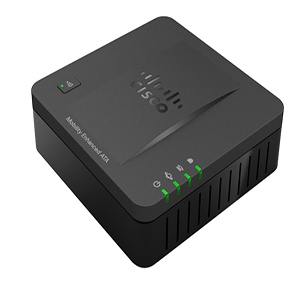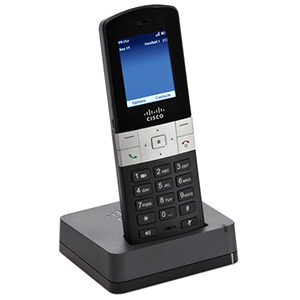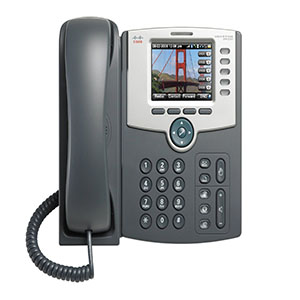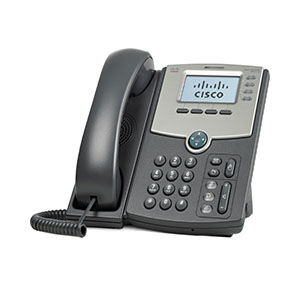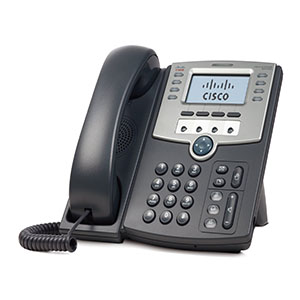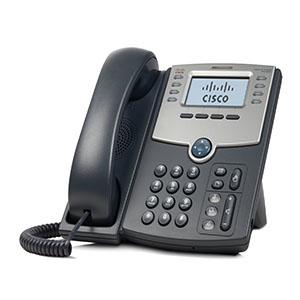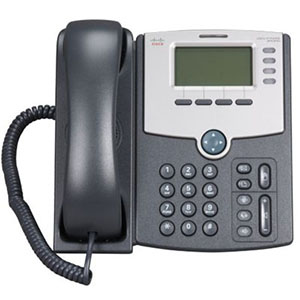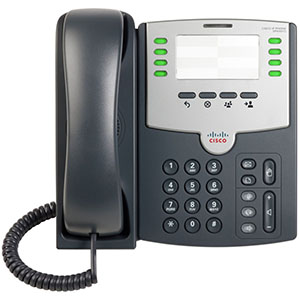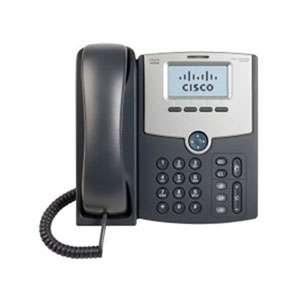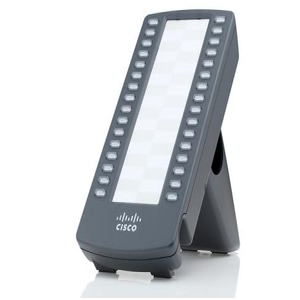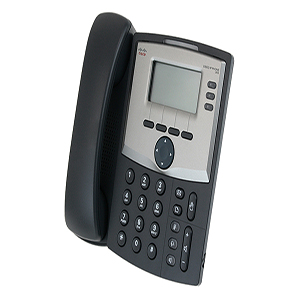Description
Cisco SPA232D-G7 DUBAI
The Cisco SPA232D DUBAI Multi-Line DECT ATA is a mobility enhanced, affordable, highly reliable voice gateway for connecting an analog phone or fax machine to a voice-over-IP (VoIP) service provider. It can also intelligently route calls to the public switched telephone network (PSTN).
The advances in the Cisco SPA232D include an integrated DECT base station used exclusively with the Cisco SPA302D Multi-Line DECT Handset, providing a mobility solution for users who tend to frequently move about their location but must always be reachable around the premises. The SPA232D supports essential voice features such as caller ID, call transfer, call waiting, call forwarding, voicemail, and much more to provide a comprehensive, advanced, and highly innovative VoIP solution.
The SPA232D provides one RJ-11 FXS port to connect a standard analog phone or fax machine and one FXO port to connect to the PSTN.
Cisco SPA232D-G7 Specification
Voice gateway
- Session Initiation Protocol (SIP) v2 (RFCs 3261, 3262, 3263, and 3264)
- SIP proxy redundancy: Dynamic through Domain Name System (DNS) SRV record
- Reregistration with primary SIP proxy server
- SIP support in Network Address Translation (NAT) networks (including Serial Tunneling [STUN])
- Highly secure (encrypted) calling with Secure Real-Time Transport Protocol (SRTP)
- Codec name assignment
- G.722
- G.711 (a-law and ¥ì-law)
- G.726 (32 kbps)
- G.729 (b and ab)
- Dynamic payload
- Adjustable audio frames per packet
- Dual-tone multifrequency (DTMF): In-band and out-of-band (RFC 2833) (SIP INFO)
DECT
- 1910 to 1930 MHz (SPA232D-G1)
- 1880 to 1920 MHz (SPA232D-G7)
- Range: Indoor, 165 ft (50m); outdoor, 980 ft (300m)
- Five handset registrations on a SPA232D
- Four simultaneous active calls
- 11 individual SIP accounts (10 DECT and 1 FXS)
- Page/Registration button
Voice features
- Quality of service (QoS) (Ethernet port upstream bandwidth control)
- Independent configurable dial plans with interdigit timers and IP dialing (per line)
- Call progress tone generation
- Jitter buffer: Adaptive
- Frame-loss concealment
- Full-duplex audio
- Echo cancellation (G.165 and G.168)
- Voice activity detection (VAD)
- Silence suppression
- Comfort Noise Generation (CNG)
- Attenuation and gain adjustments
- Flash hook timer
- MWI tones
- VMWI through frequency shift keying (FSK)
- Polarity control
- Hook flash event signaling
- Caller ID generation (name and number): Bellcore, DTMF, and ETSI
- Music-on-hold (MOH) client
- Streaming audio server: Up to 10 sessions
- MOH
- Call waiting and call waiting caller ID
- Caller ID with name and number
- Caller ID blocking
- Selective and anonymous call rejection
- Call forwarding: no answer, busy, and all
- Do not disturb
- Three-way conference calling with local mixing
- Per-call authentication and associated routing
- Call Blocking with Toll Restriction
- Distinctive ringing: Calling and called number
- Off-hook warning tone
- Advanced inbound and outbound call routing
- Hot line and warm line calling
- Long silence (configurable time setting) silence threshold
- Disconnect tone (for example, reorder tone)
- Configurable ring frequency
- Ring validation time setting
- Tip and ring voltage adjustment setting
- Ring indication delay setting
Fax capability
- Fax tone detection pass-through
- Fax pass-through using G.711
- Real-time fax over IP through T.38 Fax Relay (T.38 support is dependent on fax machine and network and transport resilience.)
Enhanced gateway authentication and routing features
- VoIP-to-PSTN (United States) service call origination and termination
- PSTN-to-VoIP (United States) service call origination and termination
- Single- and two-stage dialing
- Forward calls to VoIP service: Selective, Authenticated, and All
- Forward calls to PSTN service: Selective, Authenticated, and All
- PSTN line sharing with multiple extensions
- Automatic PSTN fallback (loss of power or IP service to unit, with quiescence to normal operations)
- Advanced inbound and outbound call routing
- Independent configurable dial plans: Up to 8
- Force PSTN disconnection
- Sequential dialing support
- VoIP to PSTN:
VoIP-to-PSTN gateway enable and disable
VoIP caller authentication method (None, PIN, and HTTP digest)
VoIP PIN maximum retry setting
One-stage dialing enable and disable
VoIP caller ID pattern matching
VoIP access-allowed caller list (no further authentication)
VoIP caller PIN and associated dial plan - PSTN to VoIP:
PSTN-to-VoIP gateway enable and disable
VoIP caller authentication method (None, PIN, and HTTP digest)
Ring through to FXS enable and disable
Ring-through tone: Configurable
Caller ID (Bellcore Type 1) for VoIP service access
Caller ID enable and disable
PIN maximum retry settings
Access-allowed caller list (no further authentication)
Caller PIN and associated dial plan
Least-cost routing (through outbound VoIP: Line1 dial plan
Security
- Password-protected system reset to factory default
- Password-protected administrator and user access authority
- Provisioning, configuration, and authentication
- Secure HTTP (HTTPS) with factory-installed client certificate
- HTTP digest: Encrypted authentication with (MD5; RFC 1321)
- Up to 256-bit Advanced Encryption Standard (AES) encryption
- SIP Transport Layer Security (TLS)
- Reset button bypass (provisionable)
Data networking
- MAC address (IEEE 802.3)
- IPv4 (RFC 791)
- Address Resolution Protocol (ARP)
- DNS-A record (RFC 1706) and SRV record (RFC 2782)
- Dynamic Host Configuration Protocol (DHCP) server and client (RFC 2131)
- DHCP client reservation
- DHCP Option 159 and Option 160
- Point-to-Point Protocol over Ethernet (PPoE) client (RFC 2516)
- Internet Control Message Protocol (ICMP; RFC 792)
- TCP (RFC 793)
- User Datagram Protocol (UDP; RFC 768)
- Real-Time Transport Protocol (RTP; RFCs 1889 and 1890)
- Real-Time Control Protocol (RTCP; RFC 1889)
- Differentiated Services (DiffServ) (RFC 2475) and type of service (ToS; RFCs 791 and1349)
- VLAN tagging (IEEE 802.1p)
- Simple Network Time Protocol (SNTP) (RFC 2030)
- Upload data rate limiting: Static and automatic
- QoS: Voice packet prioritization over other packet types
- MAC address cloning
- Port forwarding
- SIP channels support for both UDP and TCP transport
- VPN pass-through with IP Security encapsulating security payload (IPsec ESP), Point-to-Point Tunneling Protocol
- PPTP), and Layer 2 Tunneling Protocol (L2TP)
Provisioning, administration, and maintenance
- Web browser administration and configuration through integral web server
- Telephone keypad configuration with IVR prompts
- Automated provisioning and upgrade through HTTPS, HTTP, and Trivial File Transfer Protocol (TFTP)
- TR-069
- Asynchronous notification of upgrade availability using NOTIFY
- Nonintrusive, in-service upgrades
- Report generation and event logging
- Statistics in BYE message
- Syslog and debug server records: Per-line configurable web browser
- Configuration management: Backup and restore
- Support for Bonjour
- Support for Link Layer Discovery Protocol (LLDP) and Cisco Discovery Protocol (CDP)
Physical interfaces
- One WAN 100BASE-T RJ-45 Ethernet port (IEEE 802.3)
- One LAN 100BASE-T RJ-45 Ethernet port (IEEE 802.3)
- One RJ-11 FXS phone port for analog circuit telephone device (tip and ring)
- One RJ-11 FXO phone port for PSTN or PBX connection
- Reset button
Subscriber-line interface circuit (SLIC)
- Ring voltage: 40-90 Vpk configurable
- Ring frequency: 16-50 Hz
- Ring waveform: Trapezoidal or sinusoidal
- Maximum ringer load: Five ringer equivalence numbers (RENs)
- On-hook and off-hook characteristics:
- On-hook voltage (tip/ring): -46 ~ -56V
- Off-hook current: 25 mA
- Terminating impedance: Multiple
- 150 nF complex impedance
- Frequency response: 300-3400 Hz
- Return loss (600 ohm, 300-3400 Hz) >20 dB
- Idle channel noise:
- Longitudinal balance: 60 dB (typical)
Regulatory compliance
- FCC (Part 15 Class B), CE, ICES-003, A-Tick certification, Restriction of Hazardous Substances (RoHS), and UL
Power supply
- DC input voltage: 5V DC at 2.0A maximum
- Power consumption: 5W
- Switching type (100-240V) automatic
- Power adapter: 100-240V, 50-60 Hz (26-34 VA) AC input, 6 ft.(1.8m) cord
Indicator lights and LED
- Line, phone, Internet, and power
Environmental
- Dimensions (H x W x D)
3.98 x 3.98 x 1.10 in. (101 x 101 x 28 mm) - Unit weight
5.40 oz. (153 g) - Operating temperature
32 to 113¨¬F (0 to 45¨¬C) - Storage temperature
-77 to 158¨¬F (-25 to 70¨¬C) - Operating humidity
10 to 90% noncondensing - Storage humidity
10 to 90% noncondensing

